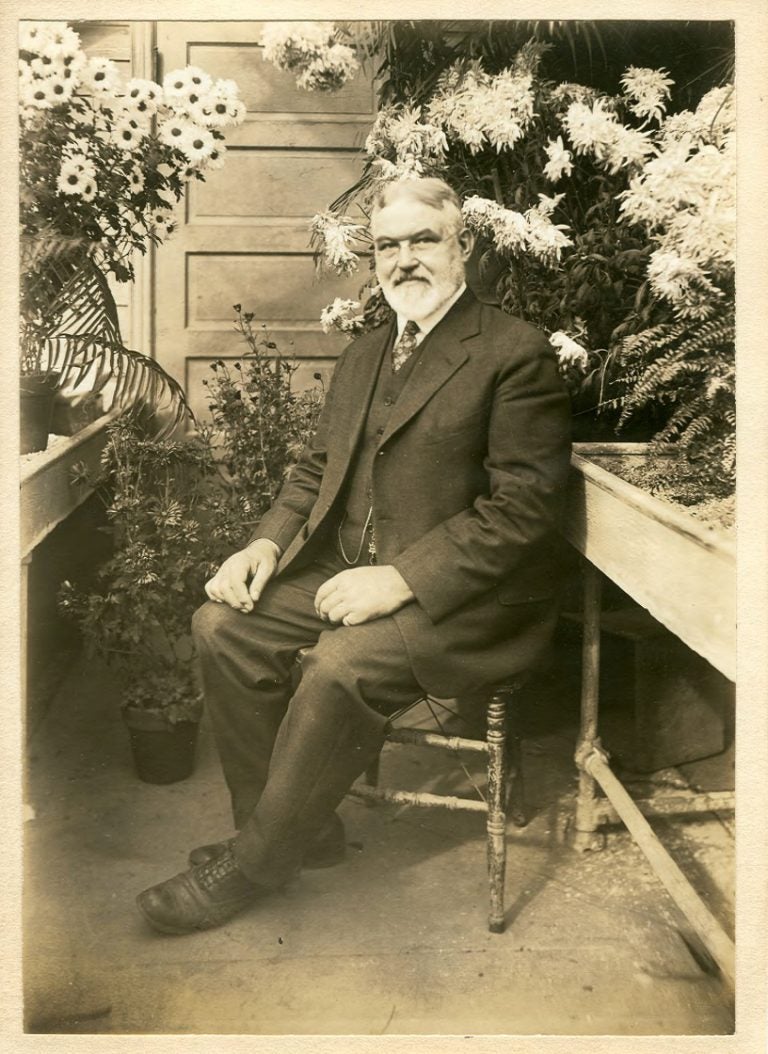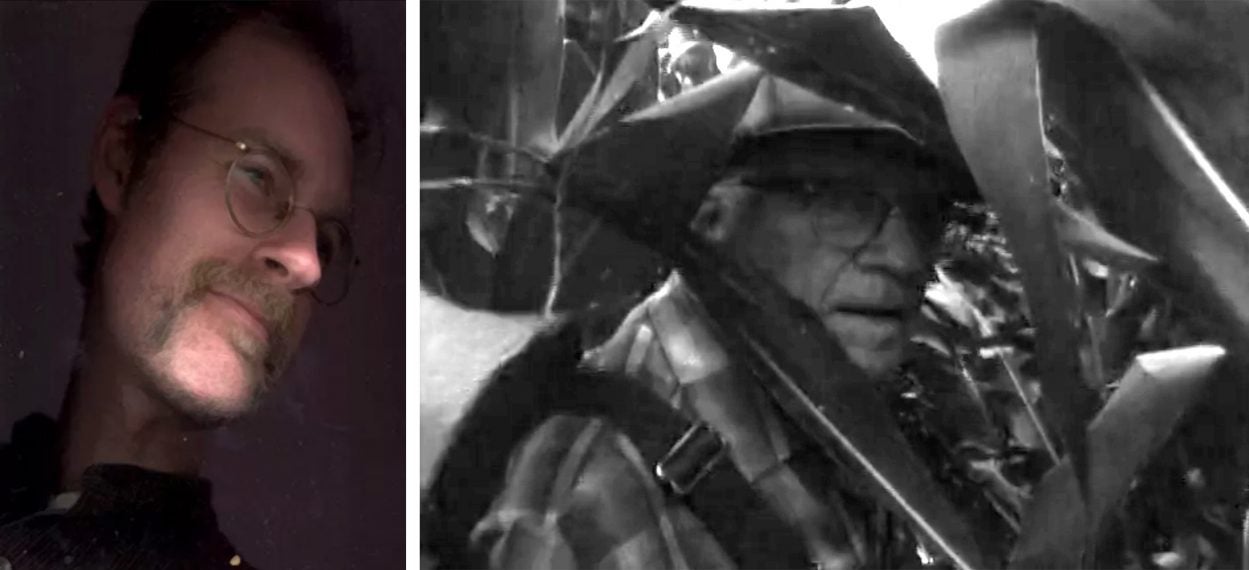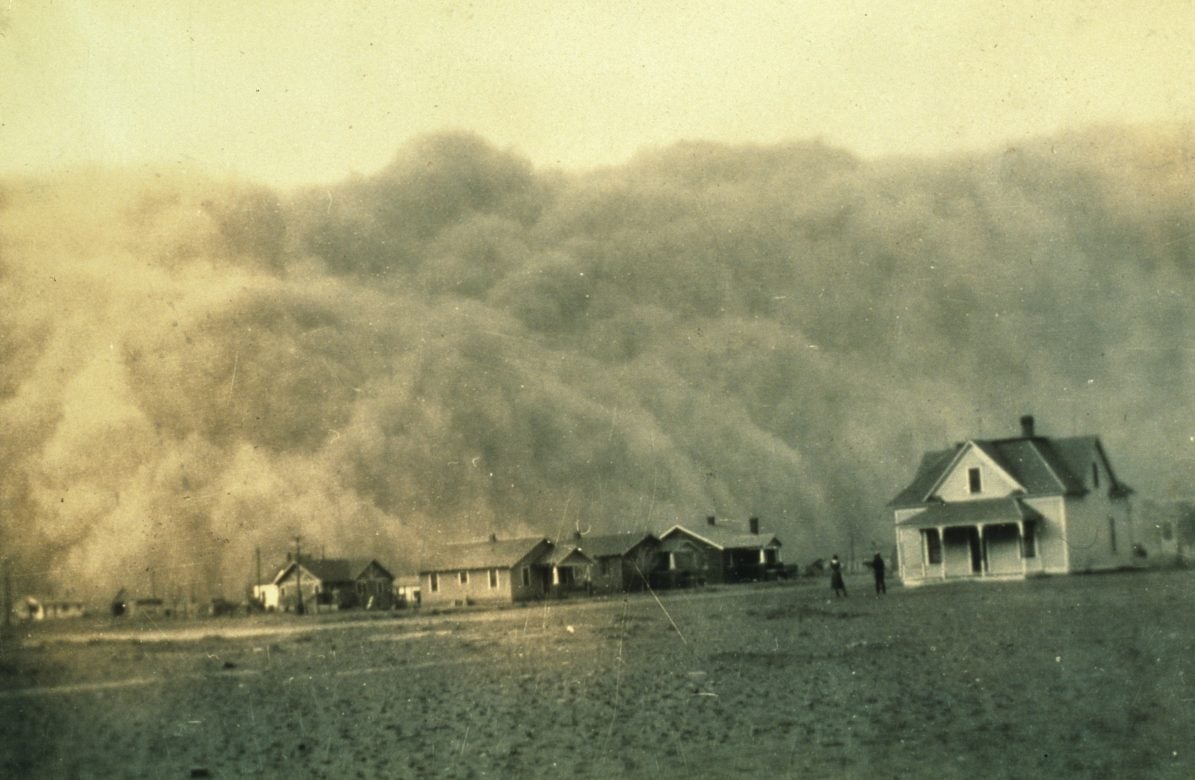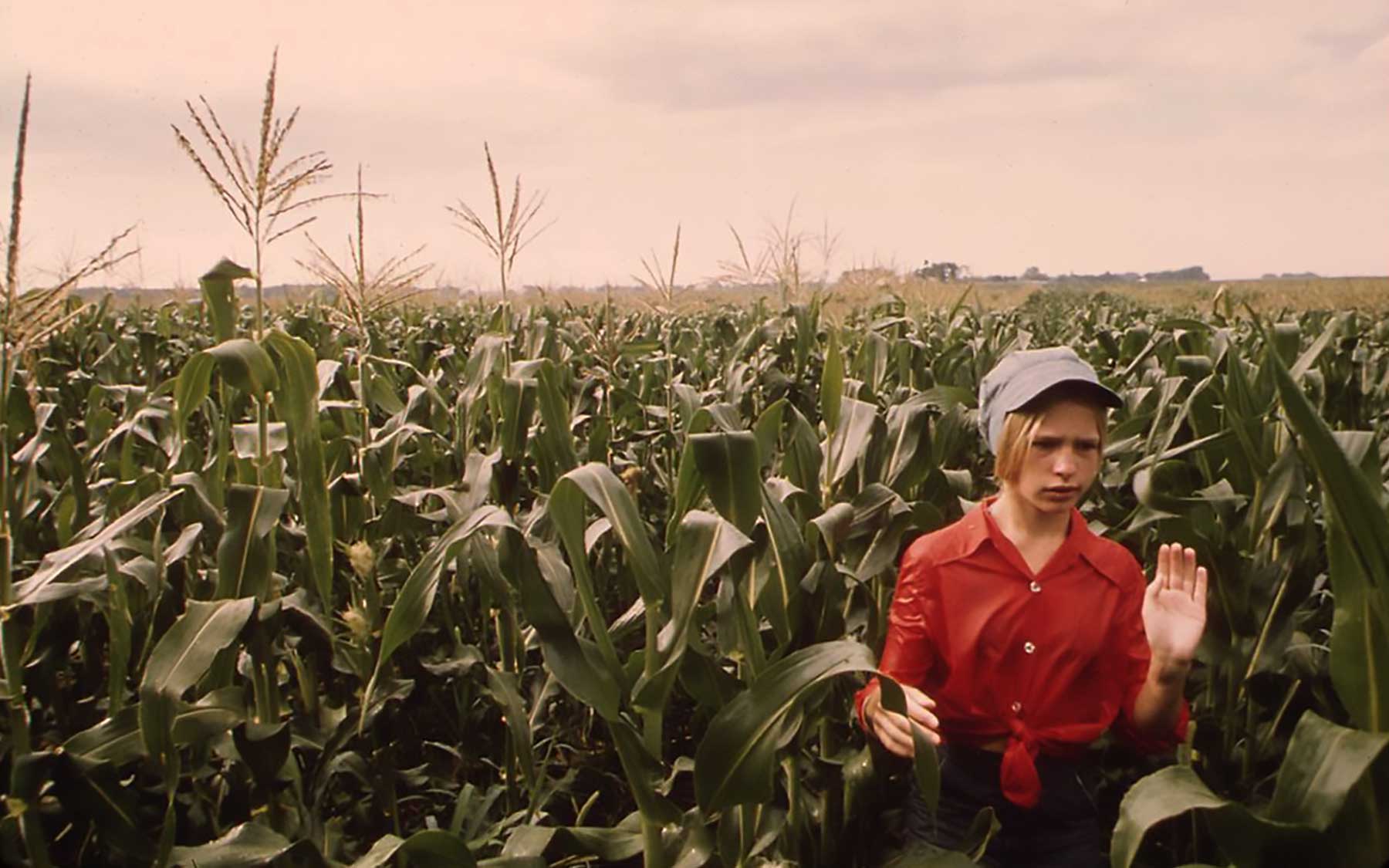Base Pairs podcast
“Knee high by the 4th of July”
It’s an adage that’s been ringing in the ears of American farmers for longer than anyone can remember, and an expression well known even to us confounded city-slickers!
That’s just how iconic corn is in America. Endless stately rows of lush green stalks, bejeweled with a bounty of golden, photogenic ears—that’s the image America’s Corn Belt evokes.
And yet, in the early 1900s, your average farmer could only pray that his crops would be “knee high” or higher by Independence Day.
That’s at least until one scientist from Cold Spring Harbor introduced American agronomists to the benefits of hybridized breeding—which, it may surprise you to know, was once considered a “wicked” practice!
In this episode, we dive into the surprisingly contentious history and genetics of America’s corn.
AA: And I’m Andrea. And last month for our super exciting pilot episode …
BS: Which, by the way, you really should check out if you haven’t already.
AA: You really should, because in that episode, we talked a lot about genes, research, and how all of that impacts us, the people.
BS: Today we’re gonna keep running with that theme, although, how we do so may surprise you.
AA: That’s because, and you might want to sit down before you hear this, today we’re going to talk about corn.
BS: Yup, corn. We’re serious, by the way. We’re going to all about the world changing research that came from our favorite kernel crop.
AA: But wait, don’t go just yet. There’s a really great story here, about mutants.
BS: And hybrids.
AA: About kings of the Midwest.
BS: And sweeping black blizzards.
AA: Do we have your attention now? Because we’re about to begin.
MB: It was the most evolutionary development that had occurred in corn culture since the prehistoric days of its discovery as a crop.
BS: That’s Milford Beeghly, and as a corn farmer, he made a bit of a name for himself in the late 1930’s. More about that later, but for now I just really want you to hear what he has to say.
MB: When word got around after 1906 that a number of scientists had explored the possibilities of a technique of exceedingly close inbreeding the result was a genetic explosion. Corn plants sow across upon themselves produced astounding mixtures of growth.
They yielded misshapen nubbins, occasional pod specimens, or throwbacks with every grain encased in a little husk, all its own and grotesque combinations of all that is good and bad in corn. We spoke of the dangers of close inbreeding as if it were wicked. Indeed orthodox agronomists called it ‘plant incest’.
BS: Hmm, plant incest. Sounds real bad, right? You definitely wouldn’t want a mouthful of incestuous corn, and yet.
AA: This is where you’re gonna tell me that I’ve been eating wicked corn all my life, isn’t it? I know how these things go.
BS: Well, it wouldn’t do to jump to conclusions. That’s why we asked Dr. Rob Martienssen to help us tell the story.
RS: The notion that plant breeding is somehow unnatural has been around for hundreds of years.
AA: Rob is a pioneering plant scientist here at the lab.
RS: I’m a plant biologist, plant geneticist, not an economic historian or anything, so I’m not an expert.
AA: But just by the virtue of being in his profession for over 25 years, he’s picked up a story or two. By the way, Rob is a Fellow of the Royal Society and an HHMI investigator in addition to being a CSHL professor.
RS: The medieval church castigated plant breeders and animal breeders for tinkering with God’s work. Thought that, you know, breeding is like a bad thing. So, there’s a long history to this.
BS: The man’s an encyclopedia of fun science facts, but we set out to talk with Rob about those scientists that farmer Beeghly spoke of earlier. The men who unwittingly turned corn so darn wicked by 1906.
AA: You just like saying that, don’t you?
BS: Yeah I kinda do. But it didn’t take all that long for this incestuous corn to shake of its bad reputation. This wicked technique actually gave rise to modern agriculture thanks to the innovative mind of one of Cold Spring Harbor Laboratory’s first scientists, a plant geneticist named George Shull.
AA: Shull was a true pioneer in his field. Actually, everyone from the field of genetics was kind of a pioneer at that time.
RS: Yeah, so I think it’s important to keep George Shull in context with his time. This was done in 1906 to 1908 and genetics itself had only just been rediscovered in 1900.
AA: Rob’s talking about the rediscovery of a paper by Gregor Mendel, the Austrian monk. In the mid 1800’s he uncovered the basic laws of genetic inheritance by breeding pea plants.
BS: When Shull was first appointed to the Carnegie Institution’s Station for Experimental Evolution …
AA: Basically just a main lab building, now our library.
BS: In 1904, word of Mendel’s work had only just resurfaced.
AA: So, inspired by the Monk and others, Shull got to work.
But breeding a plant with itself is a pretty strange thing to do. How does that even work?
BS: Well, some plants, like corn, are hermaphrodites, they have both male and female reproductive parts. In the case of corn, the top of the plant has a tassel that contains the plant’s sperm, the pollen, and the plant’s ovaries are the kernels.
AA: So I’ve been eating wicked ovaries?
BS: Hah, yeah, well I mean, yes you’ve been eating ovaries. You’ll see that this corn really wasn’t wicked at all, just bear with me.
Shull noticed as he was breeding corn plants with themselves, taking pollen from the tassels and using it to fertilize the flowers of the same plant, he noticed that this did result in some …
MB: Grotesque combinations of all that is good and bad in corn.
BS: That’s the best way to put it. Thanks Milford.
The products of this corn incest were usually weaklings. They had some good features, but they were less healthy, less fit overall. Shull was the first to notice this phenomenon, which is a really important one in plant breeding.
AA: I have to admit, though, forcing corn to propagate with itself and saying the results are weird … that doesn’t exactly sound like science.
BS: Well, Shull was extremely meticulous about his work, painstakingly recording everything his crops did. He would walk through his fields looking for star corn plants, the ones with really desirable traits like big juicy kernels and lots of them. Those were the ones that he would breed with themselves in the hopes of intensifying those good traits.
AA: But you said these crops wound up being weaklings, how can that be?
BS: When Shull was going through his fields and picking prime plants he was choosing them based on the features he could see, but there were lots of things that he couldn’t see, and those are still crucial to a plant’s survival. For example, the kernels on one plant might be extra luscious, but the same plant may not be putting enough effort into growing strong roots.
AA: Oh, so when Shull bred the plant with itself to intensify the good traits, he accidentally ended up bringing out the bad traits too.
BS: Exactly. Breeding plants with themselves basically ensures the next generation will boast not only the good traits you desire, but also the bad and ugly that come with it, in varied intensities from cob to cob.
AA: So some plants would have the size or shape that Shull desired but also wound up being particularly vulnerable to insects or disease.
BS: But Shull noticed another very important feature of those strange corn plants.
RS: So the inbreds suffered from depression, which means they look bad, right? But, if you select rare individuals each generation of inbreeding, you can effectively remove, select against some of those deleterious qualities. And if you do that enough, you will eventually get something that’s stable enough that can be propagated more or less intact every generation.
AA: It makes sense. If you only planted the seeds from better looking plants every year that helps to tip the scales toward the good traits in the population. It would take generations, but eventually, this could create a smaller gene pool that pretty much guarantees that the crop has certain desirable traits.
BS: Mm-hmm (affirmative). These corn plants were more reliable, but this wasn’t Shull’s big innovation. He still needed a way to get around the fact that when you breed a plant with itself it becomes weaker overall, even if it consistently has a good trait or two.
AA: Yeah, big juicy kernels won’t do a farmer much good if the plants are so sensitive to disease that half of them die before harvest.
BS: So, one day, Shull started a new experiment, one that was so wildly successful that it completely changed the course of agriculture. He decided to take two separate groups of these weaklings …
AA: Whose good traits he had honed through breeding with themselves …
BS: And tried breeding the two different groups with each other.
RS: In a very deliberate way, the hybrids were not only higher yielding, but they were also very uniform and really perfect for agriculture.
BS: Weak plus weak somehow added up to very strong. These hybrids had a certain vigor to them that was virtually impossible to achieve by breeding plants with themselves. Shull suspected that this was because hybrid seeds were getting only the best traits from their parents. He called this phenomenon heterosis, but today it’s commonly known by a more intuitive name: hybrid vigor.
AA: Still, if this hybrid vigor thing sounds too good to be true, it sort of is.
RS: Well a really important implication of hybrid vigor, which was immediately realized by people who were commercializing it, was that the hybrid corn, although it was wonderful in the field in the year that you planted it, if you were to collect seed from those plants and try to reproduce the same vigor in the next generation, it didn’t work. And the reason was because the genes get shuffled up again in the process of sexual reproduction. So, you can’t maintain the hybrid, you have to re-make it every year.
BS: Feed farmers wouldn’t dare set aside land just to raise inbred lines. It’s just not something most can afford, but they could afford to buy new seed every year.
RS: And that was the foundation for the hybrid seed industry because, thanks to Shull’s investigations, they knew that if they had inbreds that they could maintain and just cross them every year, then they’d be able to sell that hybrid seed every year to the farms.
AA: It was still over a decade after Shull’s work that this industry even truly saw its beginnings with a man named Henry Wallace.
He was selling hybridized seeds straight out of the back of his pickup truck for another 10 years before his company, Pioneer Hybrid, really took off.
BS: And remember Milford Beeghly? This is really where he comes into the picture. Beeghly was one of Wallace’s first customers, and in the 1930’s he even started selling his own seed.
MB: Let me introduce myself, I’m Milford Beeghly of Beeghly Best Hybrids. I just happen to be in the neighborhood and thought I’d drop in. Better order your corn now from your local dealer.
BS: That commercial was one of Beeghly’s first attempts at really getting the public’s attention, but just as Wallace did, he struggled a lot with suspicions of hybrid corn.
AA: Filmmaker Monteiths McCollum spent 7 years digging up stories and sound bytes about his grandfather, Milford Beeghly, and many of these clips show how even the tassling corn, the practice that made crossing corn possible, was viewed as ludicrous.
MB: I put it on … in the field back away from the road so people couldn’t see it very well, because whenever you detassel female rows … people had never seen that before, and they would think, “That guy’s kind of gone off his rocker a little bit.”
BS: Monteiths was kind enough to share these audio gems with us, but the culmination of his work can be seen in the award-winning film ‘Hybrid’. Visit our blog for more information.
MB: It was kind of a discouraging endeavor, but yet I had confidence that hybrid seed was the wave of the future.
AA: What I find most interesting about Beeghly is that he was a very educated man, a graduate of Iowa State College and AIMS, he was not only familiar with Shull’s work, he understood it well.
BS: His shame then was not that he questioned his own practices, but more so that he was diverging from tradition, something that the corn belt is heavily steeped in, even today.
AA: But those practices that pioneers like Beeghly and Wallace went out on a limb for, now they are tradition.
RS: Enormous fields, yeah. And every summer teenagers are employed by companies like Pioneer Hybrid to go and tear the tassels, the male flowers, off of the corn plants to make sure that they’re fertilized by the other parent of the hybrid, so it forces hybrid pollination. That’s still practiced today, not that different from how it was in the 1920’s.
BS: You have to admit, it’s a pretty big headscratcher. In 1930, the Beeghly hybrid seed corn company was nothing more than a few corn fields hidden away from narrowing eyes, but by 1950 Milford was known as the king of corn in the Midwest. No, I’m not exaggerating.
AA: And Wallace? His pioneering seed company is actually still around today, reincarnated as Dupont Pioneer, an international entity that rakes in an estimated 6 billion dollars in revenue every year.
BS: So, what happened? As the saying goes, desperate times call for desperate measures.
FDR: I shall never forget field after field of corn, stunted, earless, stripped of leaves, for what the sun left, the grasshoppers took.
BS: That’s president Franklin Delano Roosevelt, who, in 1936, visited the corn belt when it was experiencing a massive drought. The region would soon become part of what history calls ‘The Dust Bowl’, complete with massive clouds of whipped uprooted soil.
AA: See, corn and wheat crops had been literally holding the Great Plains together. With these plants withering by the acre, the soil of these farms was suddenly at the mercy of the wind. And by 1934, an estimated 350 million tons of dusty land tumbled through the Midwest skies.
BS: Many people fled from the sun scorched lands and dusty black blizzards, but as FDR put it during his fireside chat …
FDR: No cracked earth, no blistering sun, no burning wind, no grasshoppers are a permanent match for the indomitable American farmers who have carried on through desperate days and inspire us with their self-reliance, their tenacity and their courage.
BS: Sure enough, those farmers did weather the drought, dust storms, and even the Great Depression that struck during the same years.
Most untouched were the hybrid corn farmers, who, with seed bred for drought resistance, were able to press on where the skeptics had failed.
AA: The switch also just made sense to farmers who were now far more skittish about investing in a field.
RS: So, you know, when people were planting more sort of heirloom varieties of corn, from year to year they couldn’t guarantee getting the same thing. When the hybrids came along, because they were deconstructed every year in exactly the same way, they were very reproducible, and I think that helped things like crop insurance and all of these economic factors that were really important at the time.
AA: This unsung agricultural revolution also resulted in a stunning spike in corn yield. With the acceptance of hybrid seed alongside improvements in crop husbandry, the number of bushels per acre your average corn farmer can obtain has increased by nearly 8 fold since Shull made his first cross over a hundred years ago.
Extras for Episode 2
George Shull, pictured below, was a plant biologist who started his work just years after the rediscovery of Gregor Mendel’s study of heredity in pea plants. Inspired by Mendel and Charles Darwin, Shull pioneered investigations into the secret of heterosis—better known as hybrid vigor.

Milford Beeghly, pictured below left, was one of the very first pioneering hybrid corn farmers, buying his very first hybrids from Henry Wallace, the founder of Pioneer Hybrid (now DuPont Pioneer.)

Beeghly made a small fortune for himself as the “King of Corn” in the 1950s. But as his maize flourished, his family life shriveled on the vine. Learn his whole story by watching the award-winning film, Hybrid. Watch the full film here or download the education resource.
It was only to avert crisis, in the wake of drought, dust storms, crop failure, and the Great Depression, that America’s farmers finally accepted hybrid corn. Today, it is the prevailing way in which we breed corn.

Want to find out more about the amazing genetics of maize? Check out http://www.weedtowonder.org/—an online educational resource provided by CSHL’s DNA Learning Center.
Written by: Brian Stallard, Content Developer/Communicator | publicaffairs@cshl.edu | 516-367-8455
